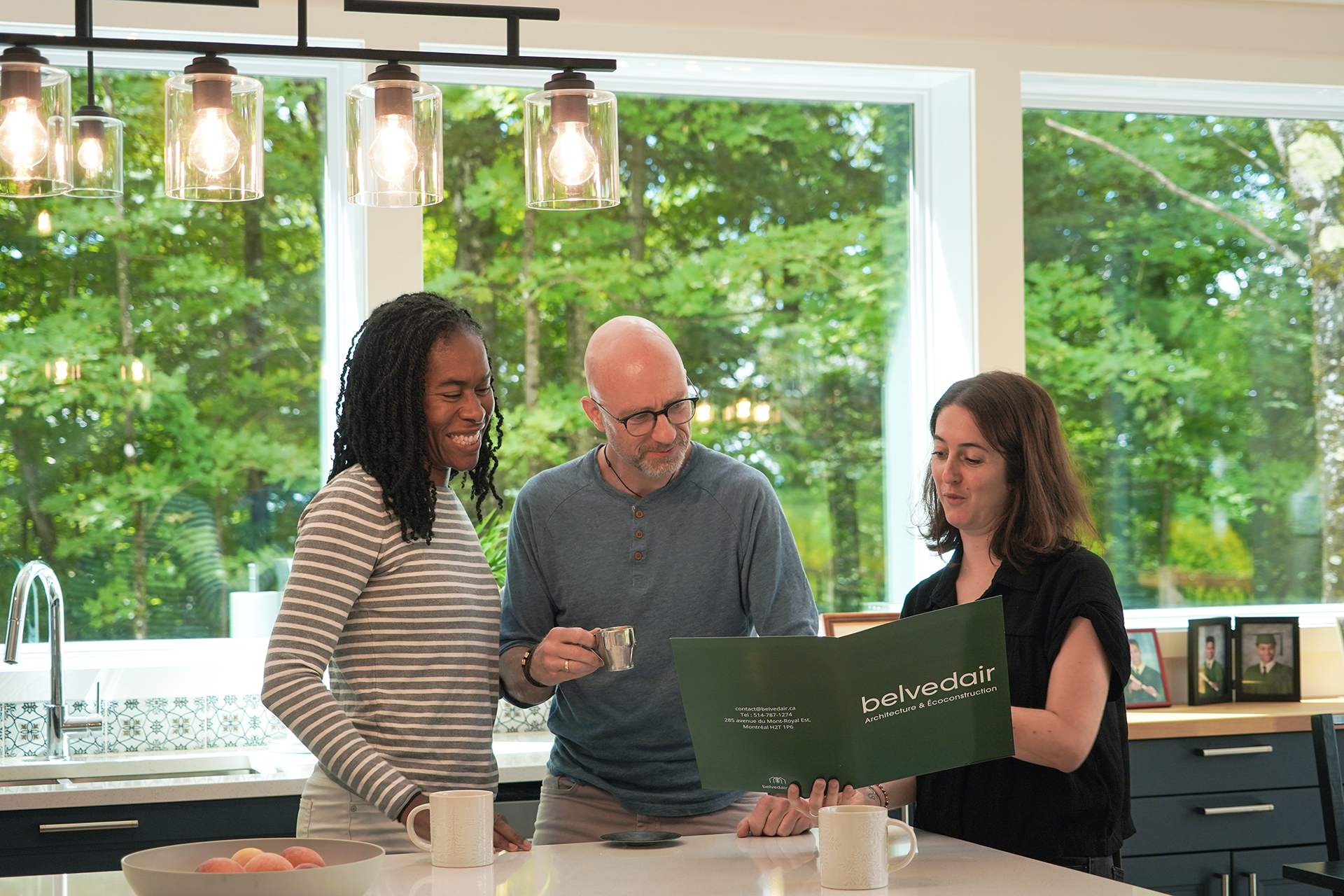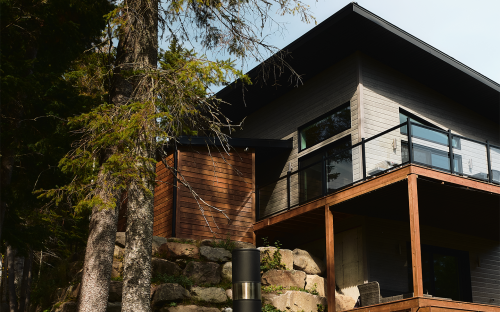Belvedair news
Eco-friendly home: where to start?
Building an eco-friendly home in Quebec is a life project that requires planning and structure. To achieve it successfully and sustainably, it’s essential to organize each step from the start. Here are the key stages to plan a high-performance, healthy, and environmentally responsible home.
The starting point is to clearly define what you want: a sustainable, healthy, efficient, and comfortable home. Ask yourself the right questions before moving forward:
- In which region would you like to live and based on what priorities: for work, for your loved ones, family, friends, or even for the beauty of the location?
- What type of environment do you want to live in: in the city, in the countryside, in the suburbs? In an agricultural area, in the mountains, in the forest...?
- What are your criteria, priorities, and possible compromises in terms of neighborhood, transportation, local services...?
- What are your lifestyle habits and what are your associated needs? What are your needs and desires?
- Which architectural style inspires you most (modern, Scandinavian, farmhouse, country…)?
- Do you already have a house plan in mind (you can find inspiration in our plan catalog), or would you prefer a custom design?
- Would you like to entrust everything to your general contractor or handle some interior finishes yourself?
Once these questions are answered, you can set a clear budget. We also provide a tool to help you estimate your preliminary budget based on your land and the type of eco-friendly home you’re planning. Feel free to contact us to receive it.
Before even starting the design of your eco-friendly home plans, it’s worth reflecting on your lifestyle, priorities, and future needs. This helps tailor the project to your reality by incorporating flexible spaces and durable materials.
The more precise your goals are from the beginning, the more efficiently your general contractor and design team can plan your turnkey construction. This approach minimizes unforeseen issues and ensures consistency throughout the project.
2. Choosing the Right Land and Site Orientation
Before moving on to designing the plans, you need to find the land and check its potential. A new home project must consider the site, the topography, and solar orientation. Visiting the property across different seasons can help you assess key elements such as:
- Sun exposure, prevailing winds, slope, and access to water and electricity networks.
- The land and its surroundings influence the home’s architecture, performance, and long-term durability.
Choosing a lot often involves a personal connection. Can you picture yourself living there? Would you enjoy sitting outside on summer days in that sunny spot? Walk the land and visualize your daily life there, these reflections will help you find the ideal site for your dream home.
Once your lot is secured, our team can visit the site with you to help bring your vision to life step by step. During this visit, we assess slopes, driveway access, utility distances, and solar paths, among other details.
The orientation of an eco-friendly home is crucial: it affects energy efficiency, indoor comfort, and even the atmosphere in your home. By orienting the main rooms to the south, minimizing northern openings, and optimizing the building’s compactness, you can significantly reduce heating needs.
At Belvedair, this reflection happens early in the design phase, ensuring that your eco-friendly home plans are perfectly adapted to the site and its environment.
This is the stage where your ideas take shape. The architecture of your home plans must integrate aesthetic, functional, technical, and ecological choices. “It is during the preparation of your home plans that many key decisions with financial and environmental impacts are made.”
An eco-friendly home begins with well-designed plans tailored to your specific needs.
A few recommendations:
- Make sure the plans consider energy efficiency, insulation, ventilation, and airtightness.
- Choose an optimized design with controlled square footage and functional layouts. The more efficient your spaces, the more you’ll save on construction and heating costs.
- Work with professionals who specialize in green building.
At Belvedair, we work through an integrated design process: clients, technologists, carpenters, and estimators collaborate from the planning phase to ensure technical consistency and avoid costly mistakes.
A successful eco-friendly architecture balances technical performance and quality of life. The goal is to create a healthy, bright, and energy-efficient home without compromising aesthetics.
Hiring a general contractor experienced in architecture and sustainable construction ensures alignment between the design and on-site execution. This approach guarantees that ecological intentions defined in the design phase are faithfully implemented during construction.
4. Construction Planning, Schedule, and Cost Management
Even with solid plans, the success of an eco-friendly project depends on the precision of construction management, scheduling, and cost control. It’s essential to work with an experienced team capable of coordinating every stage of the project.
The integrated design approach helps prevent errors and maintain consistent alignment between design, execution, and budget. Regular budget tracking also ensures transparency and control over total project costs.
A well-planned project is also a greener project: less material waste, fewer delays, and better use of human and material resources.
Since 2007, Belvedair has leveraged its expertise to design and build high-performance, durable eco-friendly homes, tailored to each site.
To start your eco-friendly home project on the right foot:
- Define your needs, goals, and budget.
- Choose suitable land and think carefully about its orientation.
- Have optimized plans designed with sustainable construction principles in mind.
- Plan your budget and schedule carefully.
At Belvedair, we share our expertise in sustainable architecture, optimized home plans, and integrated design to help create durable, high-performance, and well-thought-out homes.


